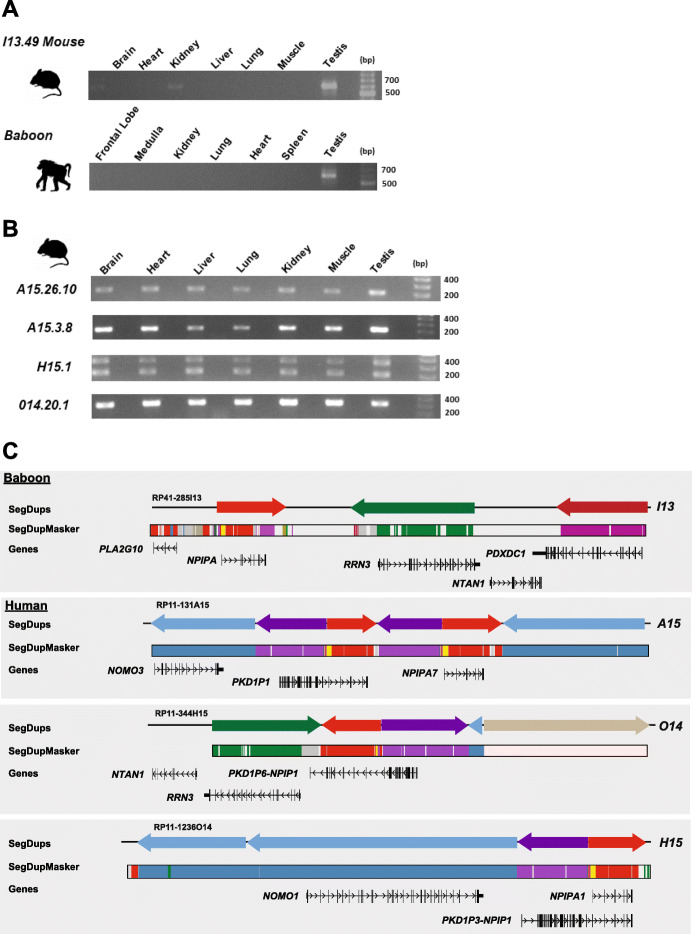Fig. 6.
Comparison of mouse BAC transgenic and NPIP expression. a RT-PCR of cDNA obtained from a panel of mouse transgenic tissues. Mouse lines (I13.49) derived from baboon (RPCI41-285I13) BAC integration demonstrate robust expression in the testis. This is a single copy of NPIP and orthologous to the ancestral location. b RT-PCR of cDNA generated from a panel of mouse transgenic tissues carrying human BAC clones with different NPIP paralogs. Mouse transgenic A15.3.8 (RP11-1381A15 NPIPA7), H15.1 (RP11-344H15 PKD1P6-NPIPP1), and O14.1 (RP11-1236O14 NPIPA1) each show a ubiquitous pattern of tissue expression. The H15.1 line shows two distinct bands because this locus contains a tandem duplication of exon 2 resulting two sets of products by RT-PCR. c Organization and sequence composition of large-insert BAC clones used in mouse transgenic experiments. Annotations include SDs (colored arrows), gene models with the direction of transcription, and DupMasker annotation [20]. The baboon and three distinct human NPIP loci exhibit a diverse set of flanking duplicons and LCR16a copies

